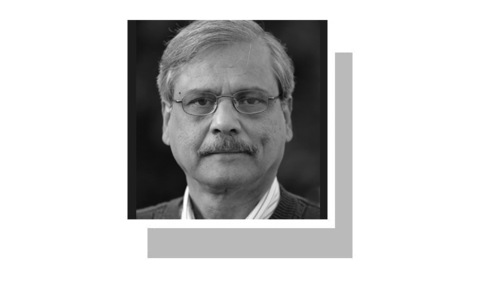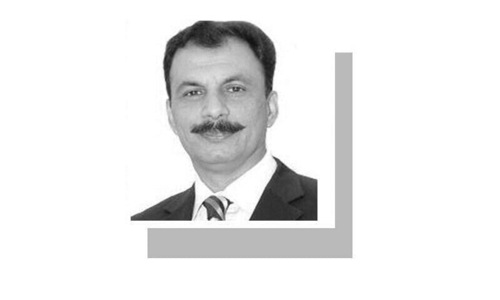Bashing Pakistan’s tariff system is old hat for analysts and industrialists alike.
Therefore, the recently announced National Tariff Policy (NTP) that acknowledges these issues and takes control away from the Federal Board of Revenue (FBR) has been long overdue.
“We have not really done any reforms almost since 2002. It is difficult to say whether the reforms will take root,” says trade expert Dr Manzoor Ahmed.
Pakistan is globally out of sync as it has one of the highest tariffs. Protectionism incentivises manufacturing for the local market and, without the stick of international competition, there is no reason to become more efficient that needlessly expensive inputs make all the harder to achieve, he explained.
Identifying tariff liberalisation or the lack thereof as a factor behind the sluggish growth of exports in recent years, the NTP document states that the average weighted mean tariff in Pakistan was reduced from 23.1 per cent in 1999-2000 to 8.9pc in 2013-14. During this period, exports increased 173pc to $25 billion. A gradual increase in average tariffs to 11.6pc since then resulted in a decline to $23bn in the last fiscal year.
While the document is a step in the right direction, it has its share of clauses that may uphold the current undesirable status quo.
One of them is of time-bound protection that is basically an infant-industry argument. It has never worked in the past. Agreeing, Dr Ahmed said that this clause was a fallacy in the policy.
People don’t pay import duties if they are too high. There is either under-invoicing or smuggling
“The government offered protection to the polyester sector in 1995. Twenty-five years later, the sector is still protected. Once we offer them protection, even if it is time-bound, manufacturers never seem to graduate out of it.”
However, he admitted that the political economy could not be ignored. New industries do require protection even if powerful lobbies tend to twist such clauses in their favour.
While accepting that import substitution is counter-productive because it makes the industry unsustainable, official spokesperson Muhammad Ashar spoke about coining a new term ‘competitive import substitution’.
Though one may consider the term an oxymoron and no different from any unsuccessful infant-industry argument, Mr Ashar argued that it would enable the industry to be globally competitive after a reasonable amount of time.
“As a nation we have to be cool-headed. If raw material or intermediate good sectors are not globally competitive, we cannot afford to continue protecting them at the cost of our final products. If an industry, after a reasonable amount of time, is unable to compete internationally, then as a nation we have to decide whether we should continue allocating resources to such a sector,” he said. It remains to be seen if the ‘reasonable’ amount of time stretches to decades like in the past.
Another problem Dr Ahmed identified was that of cascading tariffs. The principle is appealing because it is simple and makes sense on paper. But the reality is that it does not work.
“For example, say some steel products are protected at 16pc. These products are used as inputs for the manufacturing of machinery. Therefore, machinery has to be protected by a higher duty such as 25pc. This does not work because machinery is expensive anyways and is used by another sector. Therefore, tariffs are higher all along the chain.”
Furthermore, what is an input for one industry is a final product for another. Take the chemical sector, its products may be considered final products by the manufacturers and intermediate goods or raw material by the textile sector.
“Somewhere in the 1990s, the FBR carried out an exercise to make all tariffs cascading. There were so many anomalies and problems that the budget had to be re-done,” he said.
According to Mr Ashar, however, lower tariffs on inputs and capital goods will remove the need for protection. “Pakistan is perennially in the infancy stage. We want to convince industries to come out of the paradigm of seeking protection and move towards competitiveness enhancement.”
Elaborating through an example, he said “hot-rolled coils (HRC) are used as raw material for cold-rolled coils (CRC). HRC is not manufactured in Pakistan and is entirely imported. Yet a duty is arbitrarily placed on it, ranging from five to 29pc. Therefore, the CRC sector demands tariffs for protection. What is the logic in increasing the cost of CRC manufacturers while protecting no local HRC?”
This policy document is the first step, which incorporates only principal data. It does not go into the details. The next step is the process. Mr Ashar explained that a national policy centre will be created, which will entertain proposals regarding tariff structure changes from all industries.
Meanwhile, the entire structure will be examined horizontally with all tariffs being brought down to a lower slab. Then a vertical analysis will be carried out for individual sectors to examine whether the changes have disturbed a cascading tariff structure or are offering overprotection. It is at this stage that stakeholders will be consulted. This exercise has already begun with consultations with sectors such as mobile assembling and steel.
If tariffs are too high, people don’t pay them. There is either under-invoicing or smuggling. Since Pakistan is working towards curbing imports while increasing revenue generation, it is counter-intuitive to depend on taxes and duties levied at the import stage.
As aptly put by Dr Ahmed, it is better that Pakistan has a top-level board that makes conscious decisions rather than an entity that imposes tariffs for revenue generation based on the whims of some junior officer. But the fruits of the policy lie in the implementation.
Published in Dawn, The Business and Finance Weekly, December 2nd, 2019













































